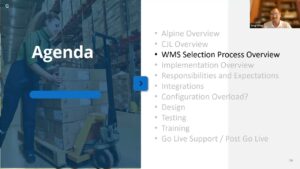The supply chain is an everchanging balance of the connections between many systems. There are natural adjustments in the links to accommodate slight changes in the contributing systems. How do you tackle the weakest links in your supply chain?
Recent changes brought on by Covid-19, available labor, port utilization, and driver shortages can take longer to balance out. The links between these many systems determine the strength or weakness of your supply chain.
In this article featured in GlobalPETS, Alpine’s Greg Utter, Senior Managing Director, outlines how to identify the weakest links of your supply chain and the impact on your business if those links fail. We are all aware of the many moving pieces that need to align just right for the supply chain to succeed, and its vulnerability means we need a clear understanding of all its inner workings.
The complexity of the supply chain and our vulnerability to the balance emphasize the need for a flexible logistics structure. This means paying close attention to:
Uncovering and addressing the hidden risks
Identifying your vulnerabilities
Diversifying your supply base
Holding intermediate inventory or safety stock
Taking advantage of process innovations
Revisiting the tradeoff between product variety and capacity flexibility













